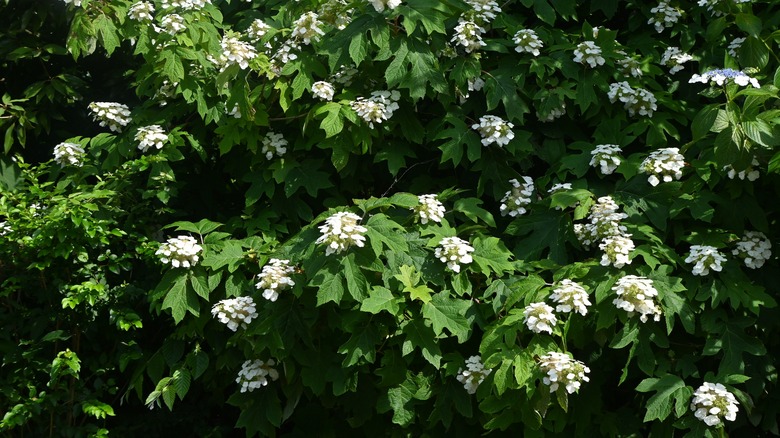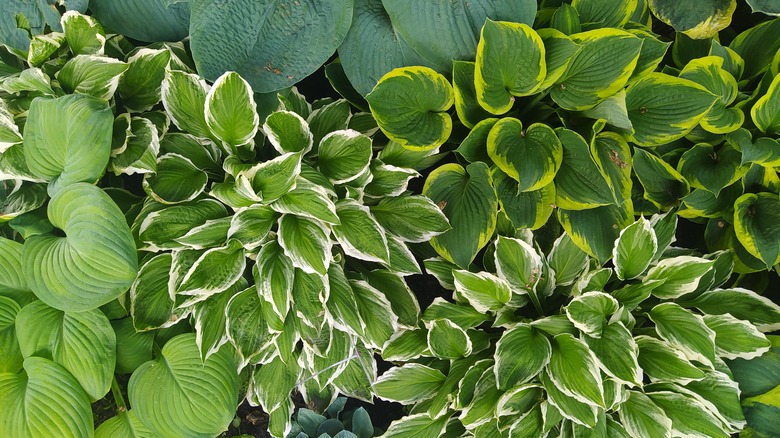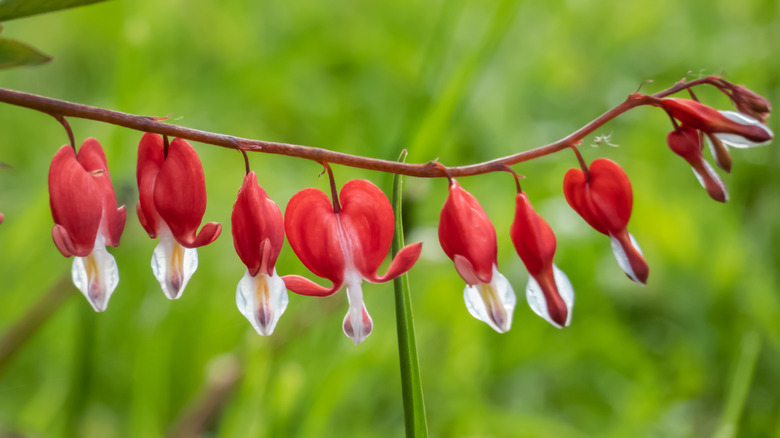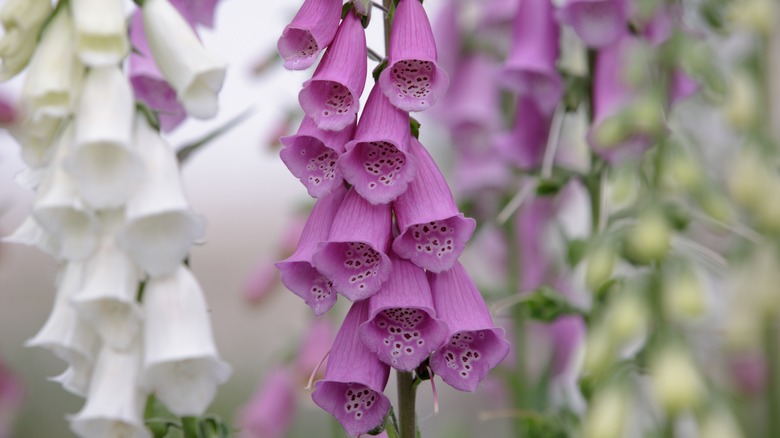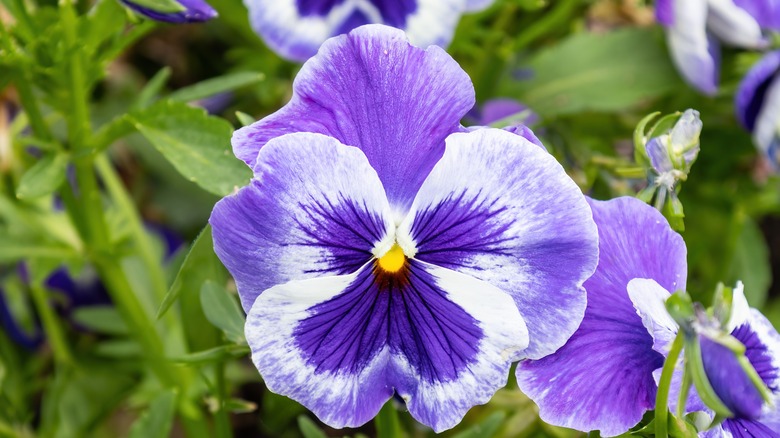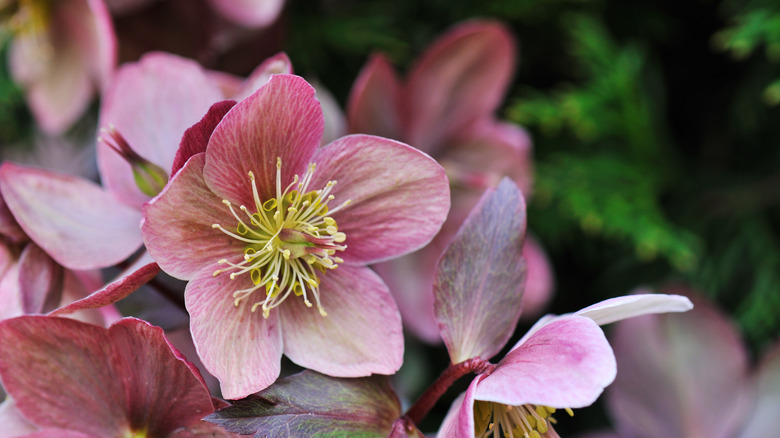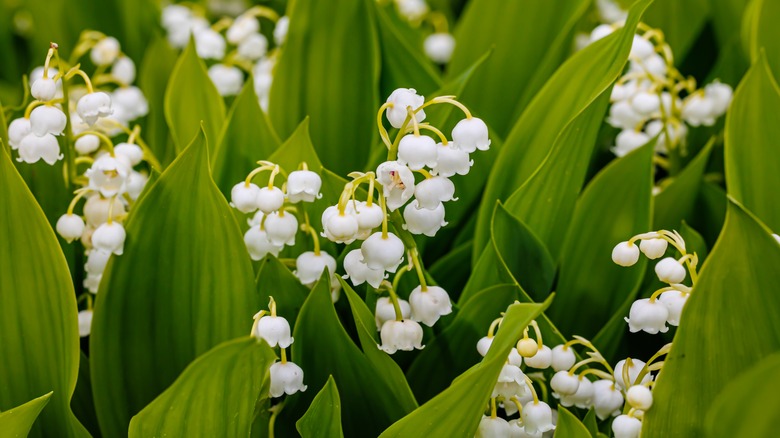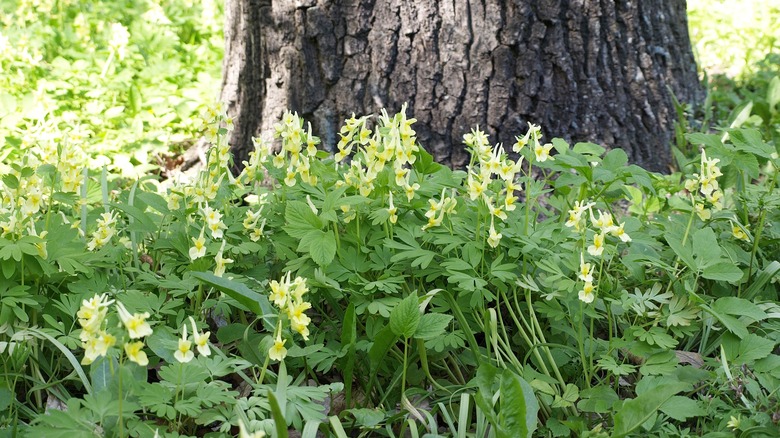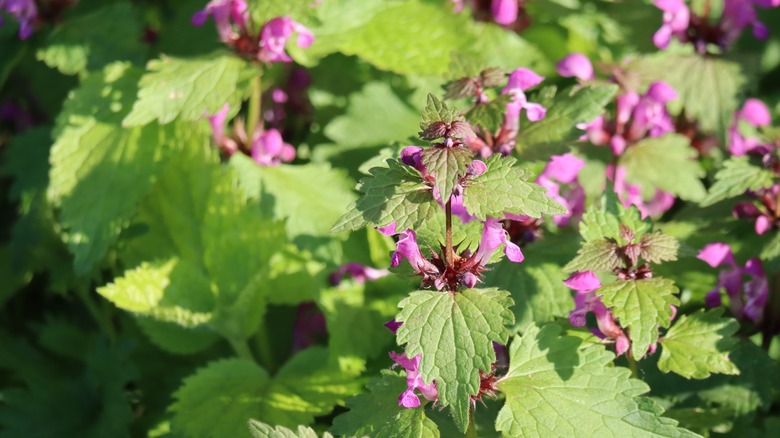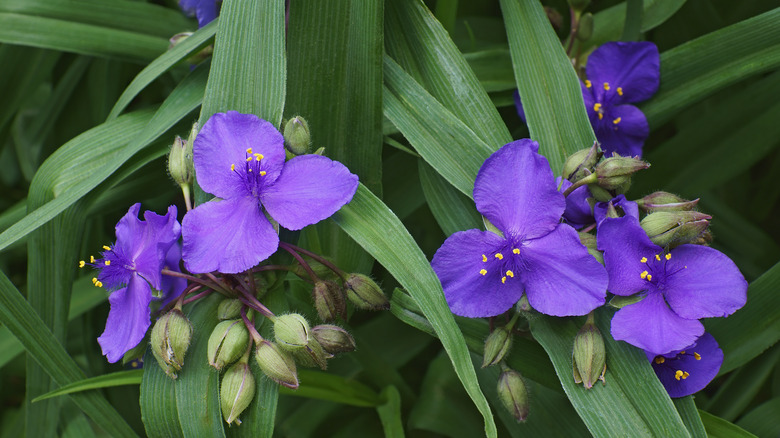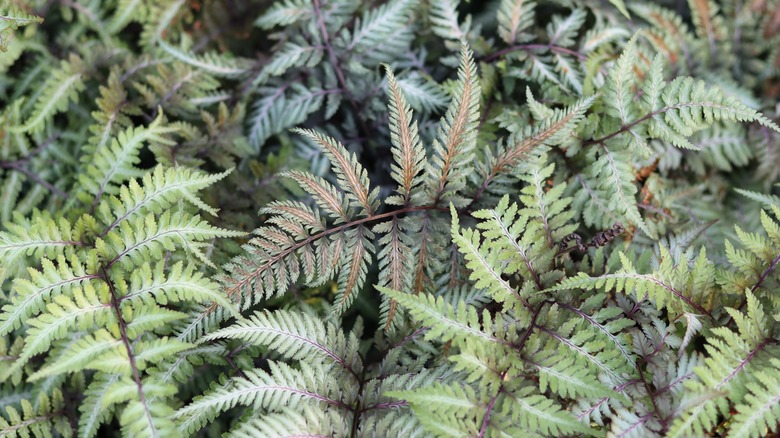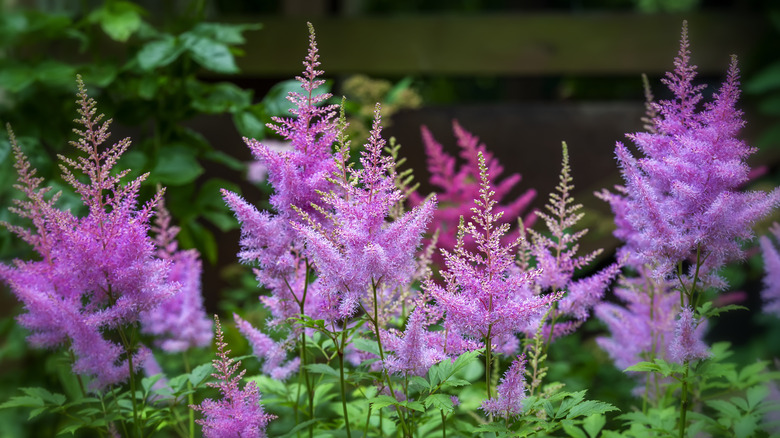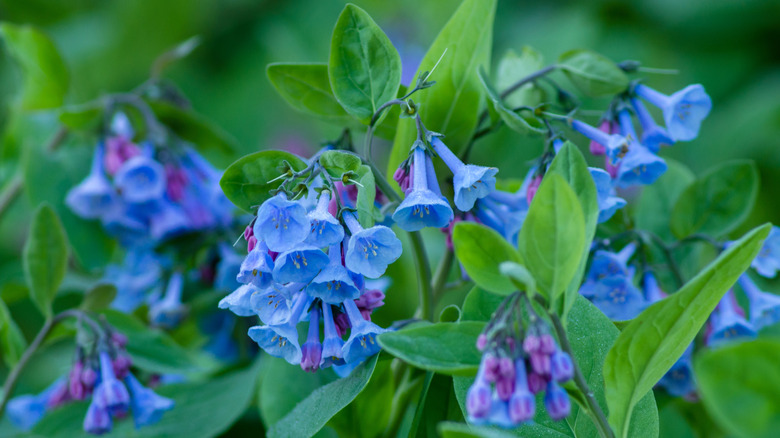These Shade-Loving Perennials Will Brighten Up Shaded Areas Of Your Garden
If you have ever struggled to grow plants in the shaded, less attractive areas of your yard or garden, have you considered that you might have been planting the wrong types of plants? While all plants require sunshine in order to survive, some need far less than others. As such, if you're looking for a way to spruce up the darker corners of your garden, why not try planting some shade-loving perennials?
Perennials are those that are planted once and return for three years or longer. Unlike annuals, which need to be re-planted on a yearly basis, perennials engage in the act of self-seeding. When they flower, die off, or go dormant for the winter, the plant seeds are returned to the earth, where they lay in wait for the spring. For shrubs like hydrangeas and rhododendrons, the upcoming year's buds take a head start, forming within the wood come winter.
The degree to which the following plants love shade varies. Some will thrive in areas of complete shade, while others only prefer partial shade combined with several hours of tanning. Regardless, planting any of these shade-loving perennials is sure to brighten up the shadowed areas of your garden.
Hydrangeas make for beautiful centerpieces
If you've ever visited the Heritage Museum and Gardens in Sandwich, Massachusetts, on Cape Cod, you'll know just how stunningly beautiful hydrangeas can be. Tucked within several acres of secluded, art-spotted woods, the hydrangeas of the museum burst into life every summer, making the attraction a popular destination among locals and tourists. The plants themselves are a staple of Cape Cod, with nearly every house on the peninsula having a plant or two in its front garden.
Hydrangea is a beautiful shrub plant whose flowers change color depending on the acidity level of the soil in which it's planted. Now, when it comes to choosing one for your shade garden, you will need to be cautious. Not all hydrangeas love the shade, so variety choice is essential if you want the plant to survive. Varieties like oakleaf, climbing, and rose sensation hydrangea vine are all excellent options for an area of your yard that is shady but not totally devoid of sunlight.
Oakleaf hydrangea is a particularly sturdy plant. Its blooms grow in taller, flat, wide shapes, differing from the more recognized spherical shape of other hydrangeas. While they do prefer more sun, they will still do incredibly well in the shade, though you may see less vibrant blooms.
Hosta is a broadleaf shady staple
If there is one type of plant you can grow in your garden without too much fear of it petering out because it didn't get enough sun, it is hostas. These lush, leafy green giants will grow in the same spot year after year with little to no maintenance. They can grow to enormous sizes and have velvety leaves that last from spring through summer and well into fall. They are frequently sought after for shade gardens, thanks to their size, ease of maintenance, and beauty.
When it comes to hostas, the more shade you give them, the better. Most varieties don't need more than a few hours of morning sun every day to get their fix. In fact, many types, such as white and blue hostas, will wilt and wither if they get too much sun. So, err on the side of more shade when it comes to these plants.
Hostas will also grow large, conical flowers in the summer, but most gardeners cut them off. This focuses the plant's energy on producing more and more of its fantastically green leaves. If you're looking for a plant with which to build up the body of your shade garden, hostas are an incredible option.
Line your shady garden path with bleeding hearts
Bleeding hearts are defined by their unique, yearly blooms. Hanging from a central stem, the blossoms of a bleeding heart are heart shaped. The name of the plant can, therefore, be taken literally, as the blooming effect makes it appear as though it is bleeding out these heart-shaped flowers. They grow in busy clusters and come in reddish-pink colorations, which will help bring additional color to the shaded side of your garden.
A plant that truly comes to life in late spring and early summer, bleeding hearts will tolerate heavy shade but prefer, like hydrangeas, to have some morning sun. The only condition in which a bleeding heart will grow in full sun is if it is a cool and misty environment, providing ample protection from the strong midday rays of the sun. Otherwise, the more shade you can provide for a bleeding heart, the happier it is going to be.
Apart from the popular red and pink shaded bleeding hearts, the plants also come in white, which are more heat tolerant, and golden hearts, which have the same pinkish blossoms but come with stunning golden yellow leaves. The latter will be excellent if you're looking to bring the most color into your shade garden.
For added height and beauty, plant foxgloves
Foxgloves make regular appearances on lists of perennials to plant in your garden that will never leave. There is a good reason for this. Not only are they strikingly beautiful, with their drooping, bell-shaped blooms that come in a wide variety of colors, but they are also highly adaptable and hardy. They can be grown in virtually any USDA hardiness zone and just so happen to do extremely well in the shade.
Seeing as foxgloves originate from the woodlands of Europe, planting them underneath trees or in the shadiest area in your garden is not going to bother them in the least. While they do like some sun, as all plants do, they are not so needy of it that they cannot thrive in its absence. Their height also allows them to add excellent visual appeal to your garden.
However, perhaps the most valuable asset of the foxglove is its propensity to grow in the harshest of soil conditions. These tall wonders have been found growing out of the rocky, degraded soil of cliffsides. So, if you have a patch in your shade garden that is particularly rough, put foxgloves there and see them thrive!
Violas add a deep color to the shadiest spots
As their name implies, violas are a member of the larger violet family of flowers. Sometimes referred to as pansies, the viola flower is a short, widespread bush plant that covers a lot of ground wherever it's planted. Not great lovers of the sun, these flowers prefer full shade to fully thrive. So, if you're looking for a plant to put in the shadiest corner of your yard, violas are the perfect choice for you.
Their most common coloration is the viola tricolor. The five-petal blooms dazzle in a mottled combination of purple, white, and yellow. These are a variety known as Johnny-jump-up viola. Other varieties include the viola sororia, which has beautiful white petals, and the viola odorata, which has a very sweet scent.
Violas are not ones for being lonely, so it is best to pare them with other early spring bloomers. They have a particular liking for bleeding hearts, which bloom alongside them in the spring. To encourage more growth, simply pinch off some flower heads and wait for new spreading blooms.
Hellebores are in it for the long haul
You'd be hard-pressed to find a better example of hardy beauty than a hellebore. Also known as Lenten roses, these beautiful blooms arrive very early in the season, often when there is still snow on the ground. With flowers that resemble a rose in shape, hellebores are so strong that they fight their way out of the snow layer through the frozen ground and shine in the early morning sun. They are great for anyone who suffers from wintertime blues.
Though there is not much in the way of true shade when hellebores come into season, once leaves begin appearing on the trees and the weather warms up, hellebores appreciate the covering. Their blooms will continue to hold throughout the spring and well into the summer, which are the seasons when they need partial to full shade. Hellebores are also a great option for anyone living on a heavily wooded property who wants to add more variety to their landscape.
As far as colors go, you have a lot to choose from. Hellebores come in white, pink, red, purple, green, and yellow, just to name a few. All will do well in those partial shade conditions without sacrificing color.
Lilies of the valley are low-maintenance spreaders
With drooping, snowdrop-style blooms hanging off green foliage, the small but stunning lily of the valley is a beautiful plant for any shade garden. It is one of those plants that prefers partial shade to total shade, therefore requiring more sun exposure than some of the others on this list. All this means, however, is that a gardener needs to be more careful about where they give it a home. Using it on the edge of your shade garden that gets the most sun is ideal for these beautiful, low-growing plants.
A word of caution when it comes to this plant, and gardeners with young children should take note: The berries produced by lily of the valley are poisonous to humans. Eating one or several could lead to potential death, so any ingestion of the plant will require immediate hospitalization. Overall, this should not present too much of a problem, but it should definitely be something to take into consideration.
Another thing about lily of the valley is that it tends to spread. If you are not careful, it could take over the majority of your shade garden. This is why it is important to pare it back in the fall to make sure that when spring comes, the plant is more controllable.
Yellow corydalis is one of the longest-lasting shade plants
There is no more hardworking perennial than yellow corydalis. While hellebores may have early and long-lasting blooms, their longevity is nothing compared to the yellow corydalis. These hardy perennials have the most enduring blooms in their species. They will last from spring all the way up to the first frost in late fall. What's even better is that they can do so in almost total shade.
The plant itself is a low-growing flower with fern-like, soft foliage and small yellow flowers. Often characterized as the sunshine of the shade, these flowers lose none of their vibrancy from lack of sunshine. In fact, too much sun will cause them to wilt, so be sure to plant them in one of the more heavily shaded areas of your yard.
If you live in an area where old stone walls proliferate in the woods, one interesting way you could liven them up is by planting yellow corydalis within them. The stones will regulate the soil temperature, preventing them from getting too cold or hot, and the forest will protect the flowers from the overhead sun. It makes for an incredible effect that could make a walk through your woods all the more enjoyable.
Get great ground cover with deadnettle
While deadnettle is another perennial that requires more sun, it is still a great addition to any shade garden as it provides a fantastic amount of ground cover. Essentially serving as a substitute for grass, shade-loving ground cover plants do the job of filling in the bare patches in your yard with something attractive and beneficial. In the case of deadnettle, you will have a tough perennial that will continue to be vigorous for many years.
As a member of the mint family, deadnettle shares the propensity to grow and take over an area. This is excellent if you're looking to create a ground cover. The foliage can come in several colors, but the most popular are variations of gray and green. The floral blooms tend towards pink, purple, and white, depending on the variety. The plants will grow to be around 12 inches tall and can spread on first planting to about 5 feet wide. Therefore, you will have to plant several, depending on how much coverage you want.
If you're not looking to create a ground cover, deadnettle also works as a bordering plant. You can grow them along walkways, under shrubs and trees, or in a rock garden with plenty of shade. They will grow and care for themselves without much fuss.
Spiderwort is wide ranging and beautiful
A wide-ranging perennial that can be found as far north as Canada and as far south as Argentina, spiderwort makes for an interesting visual comparison to the other plants on this list. Its base grows in a kind of mound, looking like a mess of long green leaves that rise up into tall, skinny spindles with three-petaled blossoms that come in either purple, pink, blue, or white. There are also some varieties that offer vibrant, chartreuse-colored foliage, which will certainly make a shade garden pop.
They make for excellent border plants, though you would do well to space them at intervals of a few feet just because their bases can grow so large. As far as sun exposure goes, spiderwort does well in shade, though not in total shade. It's another perennial that prefers a few hours a day of dedicated sun, thus characterizing it as a partial shade plant.
Spiderwort tends to grow anywhere from 1 to 2 feet tall and has a tendency to spread if not pared back. If you plant it among others with similar growing habits, the competition for space may be enough to keep them from spreading too far.
Add drama to your garden with Japanese painted ferns
Though a shade garden is obviously not in the spotlight like other gardens, that does not mean that it cannot contain its fair share of drama. We've seen so far that the colors you can add to these spaces are numerous. This doesn't just include flowers; it can also consist of leafy greens like Japanese painted ferns.
Unlike traditional ferns, Japanese painted ferns create visually dramatic landscapes, all with little to no maintenance on the part of the gardener. The foliage on these ferns is a blue-gray color, while the stems are a dark red shade. The colors together create a striking contrast to all the other plants that you put into your shade garden. There are no other plants quite like Japanese painted ferns, making them a wholly unique addition to your garden space.
They are also incredibly hardy, being able to survive in temperatures as low as minus 20 degrees Fahrenheit. There is no need to tend to these ferns once they have been planted. They require no maintenance and will continue to thrive for many years.
Astilbe adds softness to your shade garden
Softness is a key feature that many shade gardens might be lacking. While this effect can be achieved with the likes of deadnettle and Japanese painted fern, there is nothing better for adding softness and splashes of color to your garden than astilbe. A tall, perennial flower with fern-like blooms, astilbe almost seems like small fires attached to a series of stems and bright green leaves. This effect depends on the color variety you choose, for these flowers range in color from white to deep red.
As for shade, astilbe can thrive in most shady environments that get at least a few hours of sun in the morning every day. This helps aid in their coloration, but only so much because if they are planted in a scorching environment, they will wilt and wither. Astilbe makes an excellent addition to any bordering garden. Growing upwards of 4 feet tall, you can pare them with other towering plants like foxglove, Russian sage, or bleeding hearts. Or you can plant them among short-growing plants for greater visual contrast.
Enchant your shade garden with Virginia bluebells
There comes a time every spring when something magical happens to a garden. Plants start to regrow. Flowering trees blossom. Roses begin to bud. Then, in the shadows, an enchanting set of blue, bell-shaped blooms come to life and turn the ground in your garden into a sea of color. These are Virginia bluebells, and they make a wonderful final recommendation for your shade garden.
As native wildflowers, Virginia bluebells know how to grow without human assistance. They thrive in moist, shaded woodlands, creating a visual feast for the eyes in small meadows and inlets throughout forests. You can replicate these conditions in your own garden, providing plenty of shade in which these bluebells can thrive. They make excellent ground cover and will continue to grow for many years.
It would be hard to go wrong with any one of these excellent perennials in your shade garden. These sites don't have to be sentenced to life as a boring corner of your yard. As you've seen, you can add great visual variety to these areas, so long as you grow the right plants. Any one of these excellent shade perennials is sure to make your yard and garden pop.

